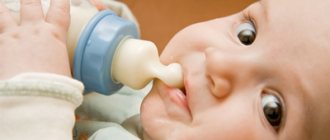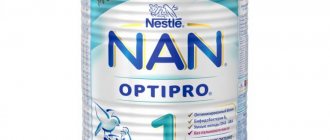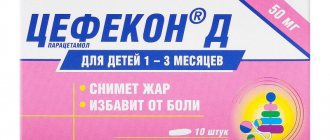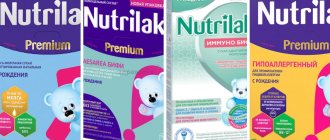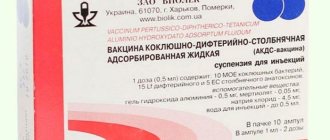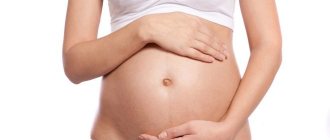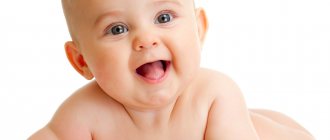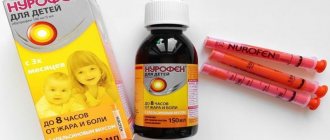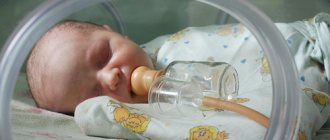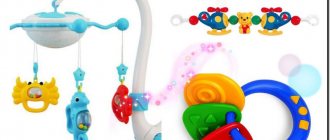Indications for use
Troychatka is a medicine consisting of a combination of three drugs - an antispasmodic, an antipyretic and an antihistamine. The composition may be different, but the most common is the combination of medications No-shpa, Analgin and Diphenhydramine.
The main indication for the use of the lytic mixture (triad) is intense fever. When a child's temperature is above 38˚C, there is a risk of vascular spasm, which leads to seizures. Antipyretic drugs do not always help, so it is better to use triad as an emergency method. This product is allowed for children from six months of age as prescribed by a doctor.
Lytic mixture for children in tablets and ampoules - application features
The appearance of a high temperature in a child seriously frightens parents. Often, in young children, the temperature rises to high levels, and already at these numbers you really need to sound the alarm.
It is important to remember that a temperature above 38 is already an alarming symptom, because at 42 degrees denaturation occurs - an irreversible change in protein in the body.
In order to prevent the mercury from stepping up another four positions, the child needs to be administered a lytic mixture (three-fold for temperature).
Every parent should have knowledge about the lytic mixture, its composition and rules of use. If the ambulance is late and the baby is on fire, an injection of the lytic mixture can be life-saving for the baby and should be done by those who find themselves next to the baby in such a situation.
Indications for use of the lytic mixture
The main indication for the use of a lytic mixture is an increase in the child’s temperature to extremely high levels.
Here it is worth clarifying for parents that not all increases in temperature should be considered life-threatening.
Therefore, you should not zealously persuade your baby to take an “injection” even at 38 - this is the temperature that needs to be brought down with medications. Nurofen, Ibufen or Paracetamol can successfully cope with it.
You need to approach the use of a lytic mixture and determine the indications for its use with a cool mind. Maximum composure and consistency in the actions of parents is the key to successfully helping a child in a difficult situation. The lytic mixture is used in the following cases:
- when the temperature rises to forty degrees and above;
- in case of unsuccessful use of other drugs - tablets, syrups, rectal suppositories;
- if the child experiences convulsions or chills against the background of fever;
- in case of disturbance of consciousness - stupor, state of delirium, hallucinations.
Most often, such an increase in temperature is caused by respiratory viruses or intestinal pathogens. To relieve painful symptoms and alleviate the child’s condition before the doctors arrive, you need to give injections of a lytic mixture.
Of course, if the baby’s temperature rises, parents should immediately call a doctor, but in a situation where the temperature literally rises to the limit in a matter of hours, and the doctor has not yet arrived, a lytic mixture is a justifiable necessity.
Important! In children under one year of age, the use of a lytic mixture is undesirable, but if the need arises, it must be used!
Composition of the lytic mixture depending on temperature
The lytic mixture, or “lytic” as it is affectionately called, can be used both in tablets and ampoules.
Thrifty parents should have the most convenient “kit” for their child, but in some cases, when all the pharmacies are closed and there are only pills, there is no time to hesitate - that means the pills are taken.
Ideally, injections are better, since the drug enters the systemic bloodstream faster and does not have a negative effect on the gastric mucosa.
The “golden composition” of the lytic mixture is Analgin and Diphenhydramine. The work of Analgin is an analgesic and antipyretic effect.
Together with Diphenhydramine, which enhances the effect of the first substance, the mixture acquires unique properties.
Within 10-15 minutes after intramuscular administration, the child will feel much better, the temperature will begin to drop, the adequacy of consciousness will return, etc.
If necessary, Diphenhydramine can be replaced with another drug that is available in the parents' medicine cabinet. This could be Tavegil, Suprastin or Fenistil, which also enhance the activity of the main savior - Analgin.
Dosage and proportions of drug solutions in ampoules for preparing a mixture for injections
The dosage of the lytic mixture is determined by the age and weight of the child.
Analgin 50% solution:
- 0.1-0.2 ml for every 10 kg of weight.
Diphenhydramine, 1% or Suprastin, 2% solution:
- up to 7 years - 0.1 ml for each year of life;
- after 7 years - 1 ml.
Papaverine or No-shpa, 2% solution:
- up to 6 months - not administered;
- from 6 months to 6 years - at the rate of 0.1 ml per year of life;
- over 6 years old - 2 ml.
To avoid an overdose, it is also necessary to observe the total volume of a single and daily dose of the lytic mixture, depending on the weight of the child.
how to give an injection in the buttock correctly
How to give an injection for fever
- First, small doses of these drugs are drawn into one sterile syringe, and then Analgin is added.
- Before giving the injection, it is necessary to release excess air from the syringe to avoid embolism.
- For more comfortable administration of the medicine, the syringe can be heated in your hands to body temperature.
- The injection site is the gluteal muscle. It must be wiped with alcohol to disinfect and prevent abscess.
- The needle is positioned at an angle of 60 degrees to the surface of the buttock.
- The injection must be given in the upper right quadrant of the gluteal muscle, since the great vessels do not pass through here and the risk of complications is minimal.
- The solution is injected very slowly, since the injection itself is quite painful.
- If the baby is small, you need to turn him over on his tummy on the changing table, or place him on your lap, tightly clasping him with your other hand so that the child does not interfere with the injection.
Dosage for oral administration in the form of tablets or solution
Giving lytic mixture in tablet form is not recommended for children under 6 years of age. The dosage should be strictly agreed with the doctor, but most often ¼ tablets of Analgin, Suprastin and No-shpa are combined.
Having crushed the drugs into powder, the mixture is diluted with water in a spoon, given to drink at once with a glass of water, so that the medicine is absorbed by the gastric mucosa and begins to act as quickly as possible.
Usually the child's condition improves after about half an hour.
Important! When using the lytic mixture for the first time, you can do an allergy test. The finished drop of the lytic mixture should be placed behind the lower eyelid and observed for the reaction - if the eye turns red and the child begins to scratch it, then an allergic reaction has developed and the use of the mixture should be stopped.
Contraindications for use
The use of a lytic mixture is a responsible step, since a solution or tablet mixture is not a panacea for all ills, and in some cases the use of such a medicine is simply contraindicated. Lytic mixture should not be used:
- in the presence of high temperature with pain in the peritoneum, stomach (possibly peritonitis, perforation of internal organs and other serious diseases requiring immediate hospitalization);
- if the baby is less than six months old;
- if the child is prone to allergies, especially to medications;
- in case of intolerance to one of the components of the triad;
- if there are serious gastrointestinal pathologies that could recur (for example, an attack of pancreatitis).
Important! In case of urgent need, the lytic mixture can be used in children from the age of six months. The administration of such drugs to babies under this age is strictly prohibited.
If a child has a stomach ache, then analgin in the lytic mixture can relieve the spasm, but not eliminate the problem, and therefore the symptoms will be incorrect and it will be difficult for the doctor to make a diagnosis.
Surgical care for these diseases should be provided in the first 24 hours after the onset of the attack, since the baby’s life depends on it. Therefore, giving a lytic mixture in this case is strictly prohibited!
Side effects of triad from temperature
In order not to overdo it with the introduction of the lytic mixture, parents should remember an important rule - only three injections of the mixture with the same composition can be given per day. Otherwise, adults may experience side effects of the mixture, which include the following:
- irritation of the mucous membrane of the digestive tract, which manifests itself as pain in the stomach after taking the mixture in tablet form;
- lethargy, loss of coordination of movements if the mixture was injected.
Lytic mixture for children is a life-saving remedy for many children with fever. However, it must be remembered that the lytic mixture itself only removes the symptom of the disease, but does not treat its cause. Therefore, it is necessary to call a doctor for the child, and it is important to indicate when, what medications and how often were given to the baby.
Source: https://topotushky.ru/zdorove-malysha/preparaty/liticheskaya-smes-dlya-detej.html
Medicines included in the triad
The troika for fever for children may have a different composition, but it should always be 3 drugs with multi-functional effects:
- The antipyretic component is selected depending on the age of the patient. For children, Nurofen or Ibufen is most often used, for adults - Paracetamol, Analgin, Aspirin or Nimesulide. Paracetamol also quickly has an antipyretic effect and at the same time relieves pain and improves general condition. Children can take it almost from birth, but it belongs to the pharmacological group of non-steroidal anti-inflammatory drugs and has many side effects.
- An antispasmodic drug is necessary to prevent seizures and vasospasm. The most common drug in this category is No-spa; it is most often used to eliminate spasms in children. You can also use Nicotinic acid, Nikoshpan (contraindicated for children), Drotaverine.
- A lytic mixture for fever for children must include an antihistamine component. This is a medicine that prevents the development of an allergic reaction. Often the body reacts to heat with a rash or swelling, so it is important to prevent these phenomena. In addition, when an illness occurs, the patient is prescribed many medications to which there may be an allergic reaction, so an antihistamine is necessary. Children are often prescribed Diazolin, Suprastin at high temperatures, and sometimes Diphenhydramine. For adults, the same drugs or Tavegil, Pipolfen.
The composition of the triad makes it possible to provide a quick comprehensive effect in case of fever and high body temperature. All these drugs in combination do not form a new medicine - they enhance the effect of each other, due to which they quickly relieve fever and pain.
All non-steroidal drugs have side effects, some of them are associated with disruption of the gastrointestinal tract, therefore, if possible, it is recommended to avoid taking Paracetamol or Aspirin (acetylsalicylic acid).
Lytic mixture for children: dosage in tablets, instructions for use
Increased body temperature or fever is the most common symptom of most infectious and a number of non-infectious diseases. This is a protective-adaptive reaction of the body to the action of harmful factors (bacteria, viruses).
At elevated body temperatures, the child’s metabolism increases, the body’s need for oxygen increases, and the load on the cardiovascular and respiratory systems increases. This condition is not only unpleasant for the baby, but also dangerous, especially for children with diseases of the respiratory, nervous, and cardiovascular systems.
Usually, modern antipyretic drugs can bring down a high temperature in a short time. However, there are times when the usual remedies do not help, and you still need to wait for a doctor.
You can combat high fever with the help of a self-prepared lytic mixture.
Description and preparation
You can prepare the drug in the form of an injection solution and give the child an injection yourself.
If this is not possible (the baby is afraid of injections, you don’t know how to give them, you don’t have a syringe at hand), you should prepare a lytic mixture in tablets.
The main active ingredient is analgin . It reduces fever and relieves pain at the same time.
The composition of the lytic mixture for children in tablets includes Suprastin, which has an antihistamine effect, and No-shpa, which helps relieve vasospasm. Many doctors advise adding a drop of Corvalol to the antipyretic composition.
How does the drug work, how long does it take to notice the effect?
The drugs included in the lytic mixture act together in a complex manner. No-spa relieves spasm of blood vessels and opens them. Analgin reduces body temperature. Suprastin prevents the body's allergic reaction.
The lytic mixture in tablets takes effect in approximately thirty minutes . The antipyretic effect lasts 4-6 hours.
It is difficult to reduce the temperature to the usual 36.6 °C, and it is also impractical. The child's body fights the disease with increased temperature.
Now the baby will be able to fight the disease further. If the thermometer still shows 38.5 °C or higher, you should consult a doctor immediately.
Dose, permissible frequency of administration
The dosage of the lytic mixture for children in tablets does not depend on age and weight.
To prepare one portion of the medicine you need ¼ tablet of Analgin, ¼ t. No-shpa and 1/3 tablet of Suprastin.
Plus 1 drop of Corvalol, if you decide to add it to the medicine.
The lytic mixture can be used once within 6 hours. The permissible duration of taking the drug is one day.
You can reduce your temperature with this drug only four times.
Find out information about the antiviral drug Kagocel.
And in this article - about what tablets to give a child against worms, depending on his age.
Read all about Sinekod children's drops in the article, you will find instructions and reviews from parents here.
Directions for use, special instructions
The tablets should be crushed into powder, mixed and given to the child in a spoon. If your baby has difficulty swallowing this powder, you can combine it with jam, honey or other thick and sweet product. You can take the medicine with water , fruit drink or juice.
No-shpa is added to the prepared product if the child’s limbs are cold, the nose and ears are cold and pale. If these symptoms are not present, it is better to replace No-shpa with Paracetamol.
Storage
The mixture is prepared for one serving ; it is not stored later. You should not prepare several portions of the medicine for the next dose: if there is a lot of powder, it can be difficult to accurately measure the required dose.
How to replace this or that drug
The following medications can be used as an antipyretic component:
- Paracetamol is a medicine from the anilide group. It contains the substance of the same name, paracetamol, which has antipyretic properties. Used for migraines, fevers, severe inflammatory processes.
- Analgin is prazolon from the NSAID group. The main active ingredient is metamizole sodium. It inhibits the synthesis of prostaglandins, relieves fever and relieves pain.
- Baralgin is an analogue of Analgin, a drug with the same substance and pharmacological action.
- Aspirin is a drug from the group of non-steroidal anti-inflammatory drugs. The main substance in the composition is acetylsalicylic acid, which has a strong analgesic and anti-inflammatory effect.
The antispasmodic component can be represented by the following drugs:
- No-Shpa is an antispasmodic drug based on drotaverine. Reduces smooth muscle activity and prevents seizures.
- Drotaverine is a vasodilator and antispasmodic agent.
- Papaverine is an antispasmodic based on papaverine, reduces smooth muscle tone.
Possible antihistamine components:
- Suprastin. Belongs to the group of antiallergic drugs. The main component is chloropyramine, which has an antihistamine effect.
- Diphenhydramine with diphenhydramine has an antiallergic, hypnotic, and mild analgesic effect. In large quantities it has a sedative effect, so it must be used with caution, and it is also important to strictly adhere to the prescribed dosage.
- Tavegil is an antihistamine based on clemastine. Has antipruritic and antiallergic effects.
The most common combinations:
- Analgin + No-Spa + Diphenhydramine;
- Aspirin + Diphenhydramine + No-spa.
The combination will be determined by doctors depending on the patient’s age, temperature and general condition. Troychatka for fever, the composition of which is also selected individually for children, relieves fever more effectively than other drugs, so it is often used only once as an emergency aid.
Directions for use, special instructions
Doctors usually inject the lytic mixture. It is imperative to tell them what antipyretic drugs the child took over the past 24 hours, because At least 6-8 hours should pass between doses of the same medications. For example, if a child was previously given Paracetamol, then it is prohibited to include it in the triad.
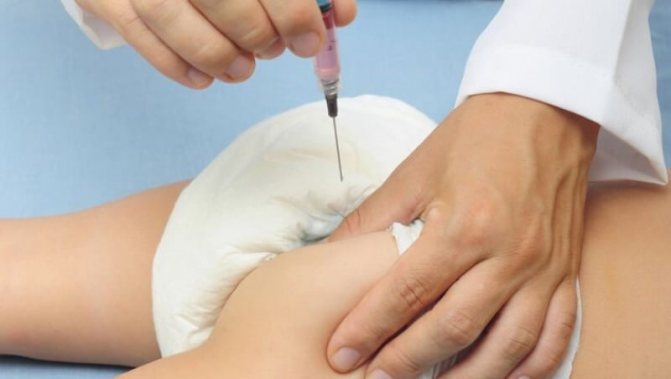
Injections are made intramuscularly in compliance with the following rules:
- You definitely need a syringe for one-time use, the syringe should not have expired, it should be in intact, sterile packaging;
- all three ampoules must be warmed in your hand so that the temperature of the drugs reaches body temperature;
- You need to take medications in a clear sequence: first an antipyretic, then an antispasmodic, and lastly an antihistamine;
- The injection is painful, so you need to administer the medicine slowly.
Dosage of lytic mixture for children with fever
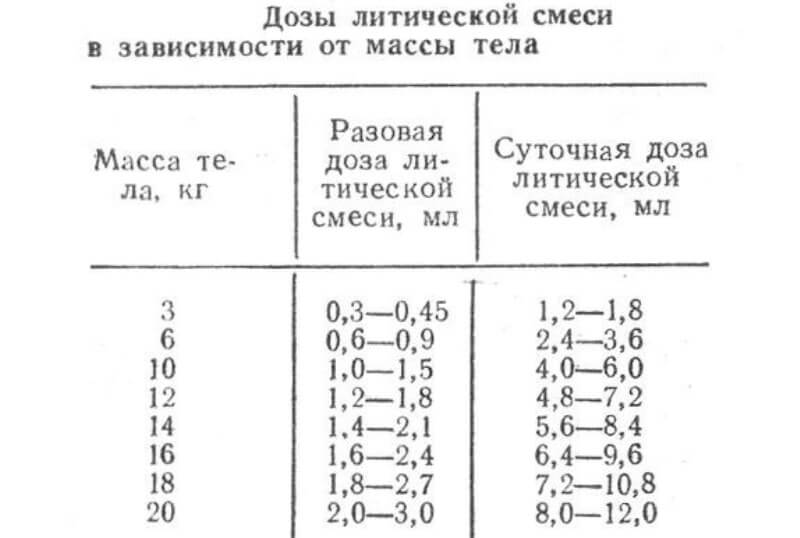
Troychatka for fever should be given carefully, because the drugs, in addition to their benefits, can cause harm.
In ampoules
A troika injection for fever works much faster than pills, because the medicines immediately enter the bloodstream and begin to act. In addition, at high temperatures, vasospasm is possible, in which a tablet from the stomach (or a rectal suppository from the rectum) may not be immediately absorbed.
The dosage of triad is determined individually depending on the age and weight of the child. For patients up to 12 months, the dose is calculated by weight, and after - by age:
- Analgin or other means to reduce fever should be dosed at the rate of 0.2 ml for every 10 kg of the patient’s weight.
- Antihistamine (Suprastin or Diphenhydramine) - 0.1 ml for each year of the child’s life.
- Antispasmodic - 0.1 ml for each year of life.
For example, if a child is 4 years old and weighs 20 kg, then 0.4 ml of Analgin, 0.4 ml of Suprastin and 0.4 ml of No-shpa will be required.
In tablets
In the form of tablets, a lytic mixture for children is prescribed if there is no vasospasm, otherwise there is a risk that the drugs may not be absorbed. For young children, 3 tablets are crushed into powder and given with plenty of water. The tablets begin to act after 30-50 minutes. The child will feel a little better and will fall asleep.
The dosage in tablets is calculated depending on the age of the patient. Children under 5 years of age are prescribed ¼ tablet, regardless of the composition of the lytic mixture. It is best to use Paracetamol, Analgin and No-shpu, because this combination is considered classic and harmless. If these drugs are not available or cannot be taken for some reason, then the composition of the triad may include Baralgin, Suprastin, Papaverine.
We use the lytic mixture for children correctly
High temperature is dangerous for the baby's life. Conventional antipyretics are not always effective. Lytic mixture for children is used only as a last resort: it is not recommended to resort to it constantly. The medicine is used only as an ambulance.
Lytic mixture: what is it and what is it used for?
Litichka is a mixture of medications used to urgently lower body temperature. It is used when other antipyretic drugs are ineffective. The medicine can only be used if the child’s body temperature has risen above 38 degrees. Otherwise, the body continues to independently fight the virus that has penetrated inside the body.
An emergency lytic composition can be given in the following cases:
- Body temperature is more than 38.5 degrees. It cannot be brought down by other medications.
- The child looks bad. The parents noticed paleness of the lips and skin. Additionally, the baby was found to have cold feet.
- As a result of this condition, the child develops seizures.
- The general condition is constantly deteriorating.
The drug is potent, so an overdose can be fatal. It can only be used if the body temperature has risen significantly. Conventional antipyretics also help alleviate the baby’s condition.
The lytic mixture can be used to lower the temperature of chickenpox. This manipulation can only be performed as a last resort. It is necessary to give the body a chance to cope with the disease on its own.
Composition of the lytic on temperature: injections, tablets, enema
Litichka is obtained by mixing the following ingredients:
- Analgin (50%). This component is considered the main one in this antipyretic. With its help, it is possible to have a moderate anti-inflammatory effect on the body.
- The composition also includes Diphenhydramine, which is available in ampoules. With its help, it is possible to enhance the effect of Analgin. This component can be completely replaced with Tavegil and Suprastin.
- Papaverine has an antispasmodic effect on the body. The component dilates blood vessels, so heat transfer from the child’s body increases significantly. Against this background, a decrease in body temperature is achieved. The component prevents the occurrence of seizures. No-shpa can be used instead of Papaverine. To prepare the injection you will need to take a 2% solution of this active ingredient.
The advisability of using a lytic mixture for children, dosage and other aspects are considered on an individual basis. The severity of symptoms, their duration and the presence of fever are taken into account.
How to prepare the mixture?
The exact proportion can be achieved by using a disposable syringe. Its volume should not exceed 2 ml. The doctor determines how many components you need to take. This takes into account the weight and age of the child. To prepare at home, you must adhere to the following scheme:
- Before performing all manipulations, each ampoule should be wiped with alcohol.
- Each of them opens alternately. The same amount of medicine is drawn into the syringe from the ampoules.
The injection is performed in the upper square of the buttock. After the injection, you must carefully monitor the child's condition. The medicinal composition may cause allergies. In this case, you should immediately call an ambulance.
Calculation of dosage of lytic mixture for children
The tablet contains the required amount of the active ingredient. When performing injections, dose calculation is important. In medical practice, 0.2 ml of Analgin is taken per 1 kg of child weight. If the child is not yet 1 year old and weighs 5 kg, then you will need to take 0.1 ml of Analgin, Diphenhydramine and Papaverine. If the weight is 10 kg, then the doses of the active ingredients are doubled and amount to 0.2 ml. However, some doctors insist on a minimum volume of 0.1 ml.
There is a table that you need to consult before injection. It indicates the maximum volume, which is calculated individually for each child’s weight.
| Weight in kg | 3 | 6 | 10 | 12 | 14 | 16 | 18 |
| Maximum single volume, ml | 0,45 | 0,9 | 1,5 | 1,8 | 2,1 | 2,4 | 2,7 |
| Maximum daily volume, ml | 1,8 | 3,6 | 6,0 | 7,2 | 8,4 | 9,6 | 10,8 |
The lytic mixture in tablet form can be used to treat children over 6 years of age. Before starting use, you will need to agree on the dosage with your doctor. Most often, a dose of ¼ of Analgin, Suprastin or No-shpa is prescribed. It is recommended to grind the components into powder and mix with a small amount of water. Next, the resulting composition is poured into a spoon and given to the child. It is important that he is able to drink the liquid at one time. You can take your medication with one glass of water. Thanks to this, it will be possible to significantly speed up the process of absorption of the active ingredients into the gastric mucosa. Typically, the pills will take effect within 30 minutes.
The lytic mixture can only be used after an allergy test. To do this, a small amount of liquid is dripped onto the lower eyelid. Next, parents or a doctor observe the reaction of the eyeball. If it does not turn red, then you can safely proceed with the injection. Otherwise, to normalize body temperature, you need to use a drug from a different group.
How quickly does it work, how long does the effect last?
Lytic mixture dosage for children must be calculated correctly. In this case, a positive effect can be obtained within 15 minutes. A professional should give the injection, because only in this case the composition will not leak out. In the future, it will be able to be evenly distributed throughout the subcutaneous tissue.
If the manipulations are done correctly, the temperature will normalize within 20 minutes. The baby's chills will decrease. His arms and legs will become warm. As a rule, the temperature drops to 37 degrees. It cannot be knocked down further, because the body must have the resources to fight this condition.
The effect of the product will last for two hours. However, on average, the improvement will last for 4 to 6 hours. If during this period there is a repeated increase in temperature, the child must be hospitalized immediately.
Side effects and contraindications for use
It is important to observe the specifics of treatment with the lytic mixture for children, dosage in tablets and injections. There are a number of contraindications to treatment in this way:
- High body temperature is accompanied by severe pain in the lower abdomen. It is recommended to wait for the ambulance to arrive: the staff will consider the symptoms and decide on the advisability of admission. The situation may develop against the background of inflammation of appendicitis. The lytic mixture completely stops these manifestations and provokes serious complications. In this case, the risk of death also increases.
- Any pill or injection can trigger an allergic reaction. An irritation test will help prevent the situation. It is necessary to administer a small dose of the drug and observe the reaction of the child’s body. If there is no irritation, then the entire composition can be administered.
- The patient is not yet 6 months old. In this case, the method of lowering the temperature should be chosen by the doctor. The norm of the lytic mixture for this age is minimal and depends on the weight of the small patient.
The injection can only be given if the last time analgesics were taken more than four hours ago. Otherwise, the risk of overdose and side effects increases.
It is prohibited to carry out treatment without medical supervision. It can be detrimental to a child's body. Parents should strictly follow all the doctor’s recommendations and not use this method of lowering the temperature too often. The immune system itself will learn to resist harmful viruses and bacteria. The lytic mixture leads to drowsiness, lethargy and absent-mindedness. This manifestation can be recorded within 6 hours after the injection.
Contraindications
Triplet can not always be used by children and adults at high temperatures. Before taking 3 tablets or making an antipyretic injection, you need to familiarize yourself with possible contraindications to avoid unwanted reactions.
Contraindications to the use of triad:
- individual intolerance to the components that are included in the lytic mixture;
- use of drugs of similar effect less than 6 hours before using triad;
- taking Analgin or Diphenhydramine;
- chronic diseases of the gastrointestinal tract.
During the period of bearing a child, triads are allowed only if the expected benefit outweighs the possible harm. During lactation, it is recommended to stop breastfeeding for the duration of treatment. In addition to the lytic, it is not advisable to feed the baby milk from a mother who has a fever, fever, or fever, because pathogens can be transmitted through the milk.
Overdose and side effects
In some cases, a child should not be given triplet for fever, because the drugs can cause side effects:
- decreased blood pressure (due to the fact that non-steroidal anti-inflammatory drugs, for example Acetylsalicylic acid, Analgin, Paracetamol, thin the blood);
- dry mouth, constant desire to drink caused by dehydration;
- an allergic reaction that manifests itself as redness, rash and itching of the skin, swelling of the extremities, and Quincke's edema.
In case of overdose, heartburn, nausea, vomiting, and possible diarrhea occur. Often, patients who do not comply with the dosage when using Suprastin, Diazolin at high temperatures along with Drotaverine (Diphenhydramine) experience a disturbance in heart rate (tachycardia, arrhythmia), and increased blood pressure.
If, after taking a triple combination of drugs, a child develops similar symptoms, you need to immediately call an ambulance, and at this time wash the stomach yourself (if you took the tablet form) and give sorbents, for example Activated carbon, Enterosgel or Atoxil
Side effects and main contraindications
But, like any other medications, the lytic mixture has certain contraindications and possible side effects. And therefore, before use, you need to carefully read them in order to exclude a negative impact on the child’s general health and well-being.
We recommend: Ear drops for children
Dangerous side effects:
- An allergic reaction that only gets worse in the absence of appropriate medical care.
- A drop in blood pressure and severe dizziness as an additional symptom.
- Decreased diuresis if there is damage to the kidneys and genitourinary system.
- Lethargy and general malaise of the body, complemented by weakness.
- Dry mouth and severe thirst.
- Nausea and vomiting.
As a rule, one can talk about the occurrence of side effects only when using the lytic mixture in high concentrations, that is, when exceeding the norm, as well as when repeated use earlier than 6 hours after the first dose. These moments can cause great harm to the child’s body, so you need to monitor the concentration and time of taking the substance with special care.
